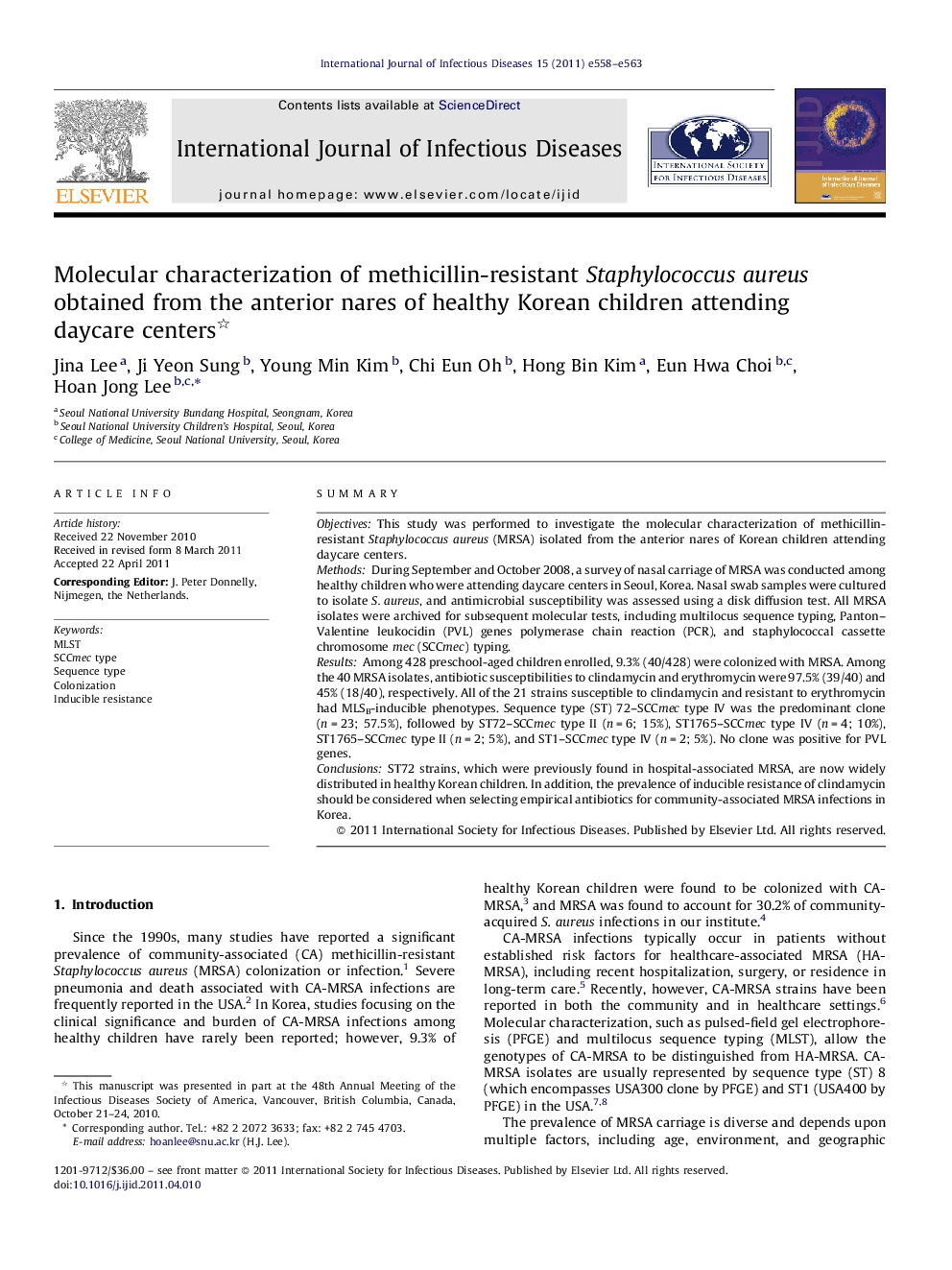| Article ID | Journal | Published Year | Pages | File Type |
|---|---|---|---|---|
| 3363946 | International Journal of Infectious Diseases | 2011 | 6 Pages |
SummaryObjectivesThis study was performed to investigate the molecular characterization of methicillin-resistant Staphylococcus aureus (MRSA) isolated from the anterior nares of Korean children attending daycare centers.MethodsDuring September and October 2008, a survey of nasal carriage of MRSA was conducted among healthy children who were attending daycare centers in Seoul, Korea. Nasal swab samples were cultured to isolate S. aureus, and antimicrobial susceptibility was assessed using a disk diffusion test. All MRSA isolates were archived for subsequent molecular tests, including multilocus sequence typing, Panton–Valentine leukocidin (PVL) genes polymerase chain reaction (PCR), and staphylococcal cassette chromosome mec (SCCmec) typing.ResultsAmong 428 preschool-aged children enrolled, 9.3% (40/428) were colonized with MRSA. Among the 40 MRSA isolates, antibiotic susceptibilities to clindamycin and erythromycin were 97.5% (39/40) and 45% (18/40), respectively. All of the 21 strains susceptible to clindamycin and resistant to erythromycin had MLSB-inducible phenotypes. Sequence type (ST) 72–SCCmec type IV was the predominant clone (n = 23; 57.5%), followed by ST72–SCCmec type II (n = 6; 15%), ST1765–SCCmec type IV (n = 4; 10%), ST1765–SCCmec type II (n = 2; 5%), and ST1–SCCmec type IV (n = 2; 5%). No clone was positive for PVL genes.ConclusionsST72 strains, which were previously found in hospital-associated MRSA, are now widely distributed in healthy Korean children. In addition, the prevalence of inducible resistance of clindamycin should be considered when selecting empirical antibiotics for community-associated MRSA infections in Korea.
